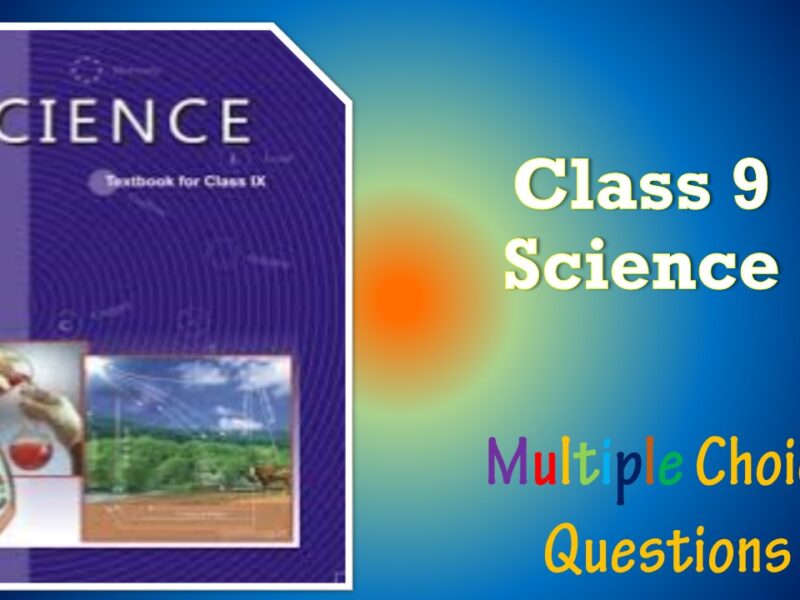CBSE Class 10 Science Chapter 11 Human Eye and Colourful World Multiple Choice Questions with Answers. MCQ Class 10 Science Human Eye and Colourful World with Answers was Prepared Based on Latest Exam Pattern. Students can solve NCERT Class 10 Science Human Eye and Colourful World MCQs with Answers to know their preparation level.
MCQ Class 10 Science Human Eye and Colourful World with Answers - Set - 2
Question 1:
Which option justifies that the Sun appears red at sunrise and sunset?
(a) red scatters highest by the atmosphere
(b) the distance between the sun and earth reduces
(c) red has high wavelength, so it travels longer distance
(d) the white light disperses into seven colours, only red enters the atmosphere
Correct Answer – (C)
Question 2 :
When white light enters a prism, it gets split into its constituent colours. This is due to
(a) different refractive index for different wavelength of each colour
(b) each colour has the same velocity in the prism.
(c) prism material has high density.
(d) Scattering of light
Correct Answer – (A)
Question 3 :
Which of the following phenomena contributes significantly to the reddish appearance of the sun at sunrise or sunset?
(a) Dispersion of light
(b) Scattering of light
(c) Total internal reflection of light
(d) Reflection of light from the earth
Correct Answer – (B)
Question 4 :
The splitting of white light into different colours on passing through a prism is called
(a) reflection
(b) refraction
(c) dispersion
(d) deviation
Correct Answer – (C)
Question 5 :
Which of the following phenomena of light are involved in the formation of a rainbow?
(a) Reflection, refraction and dispersion
(b) Refraction, dispersion and total internal reflection
(c) Refraction, dispersion and internal reflection
(d) Dispersion, scattering and total internal reflection
Correct Answer – (B)
MCQ Class 10 Science Human Eye and Colourful World with Answers
Question 6 :
When white light enters a glass prism from air, the angle of deviation is least for
(a) blue light
(b) yellow light
(c) violet light
(d) red light
Correct Answer – (D)
Question 7 :
Why do stars appear to twinkle at night?
(a) because the light of stars travels in different medium
(b) because the distance of star varies when earth rotates
(c) because the star changes its position relative to earth
(d) because the atmosphere reflects the light at different angles
Correct Answer – (A)
Question 8 :
The deflection of light by minute particles and molecules of the atmosphere in all directions is called ____________ of light.
(a) dispersion
(b) scattering
(c) interference
(d) tyndall effect
Correct Answer – (B)
Question 9 :
A person is seeing an object closer to his eyes. What changes in his eyes will take place?
(a) the pupil size will expand
(b) the ciliary muscles will contract
(c) the focal length of eye lens will increase
(d) the light entering in the eye will be more
Correct Answer – (B)
Question 10 :
The danger signals installed at the top of tall buildings are red in colour. These can be easily seen from a distance because among all other colours, the red light
(a) is scattered the most by smoke or fog
(b) is scattered the least by smoke or fog
(c) is absorbed the most by smoke or fog
(d) moves fastest in air
Correct Answer – (B)
- NCERT Solutions Class 10 Science Chapter 8 : How Do Organisms Reproduce?
- NCERT Solutions Class 10 Science Chapter 9 : Heredity and Evolution
- NCERT Solutions Class 10 Science Chapter 10 : Light Reflection and Refraction
- NCERT Solutions Class 10 Science Chapter 11 : Human Eye and Colourful World
- NCERT Solutions Class 10 Science Chapter 12 : Electricity
- NCERT Solutions Class 10 Science Chapter 13 : Magnetic Effects of Electric Current
- NCERT Solutions Class 10 Science Chapter 14 : Sources of Energy
- NCERT Solutions Class 10 Science Chapter 15 : Our Environment
- NCERT Solutions Class 10 Science Chapter 16 : Management of Natural Resources
- NCERT Solutions Class 10 Science Textbook Download



